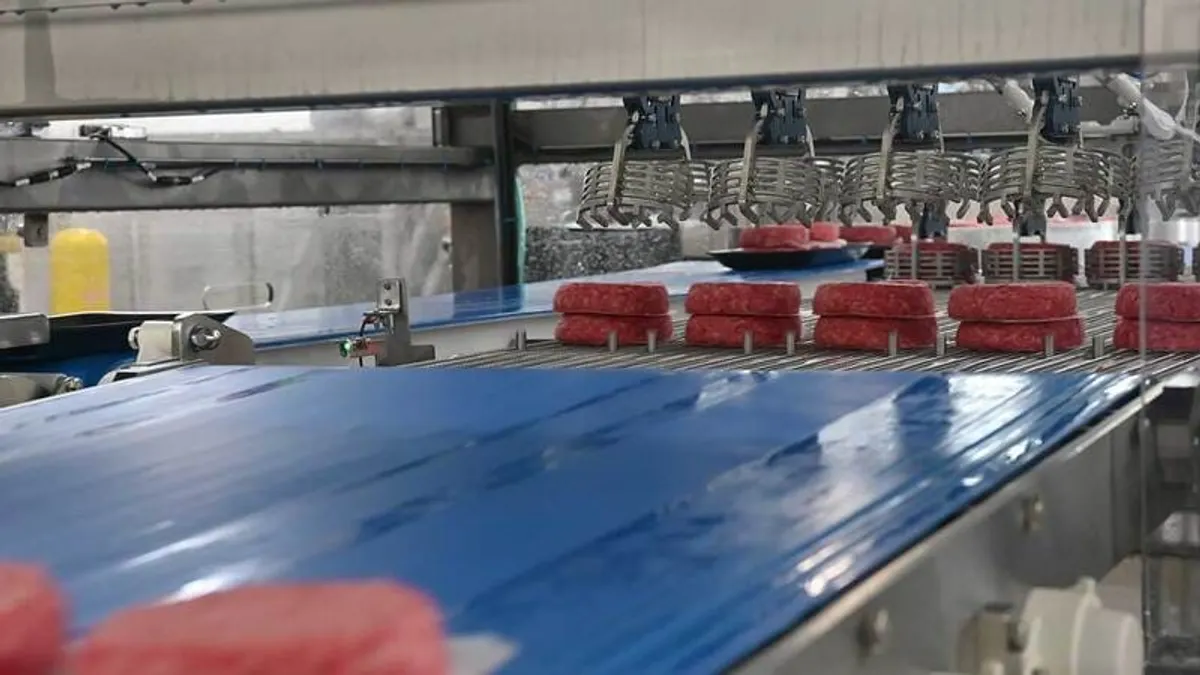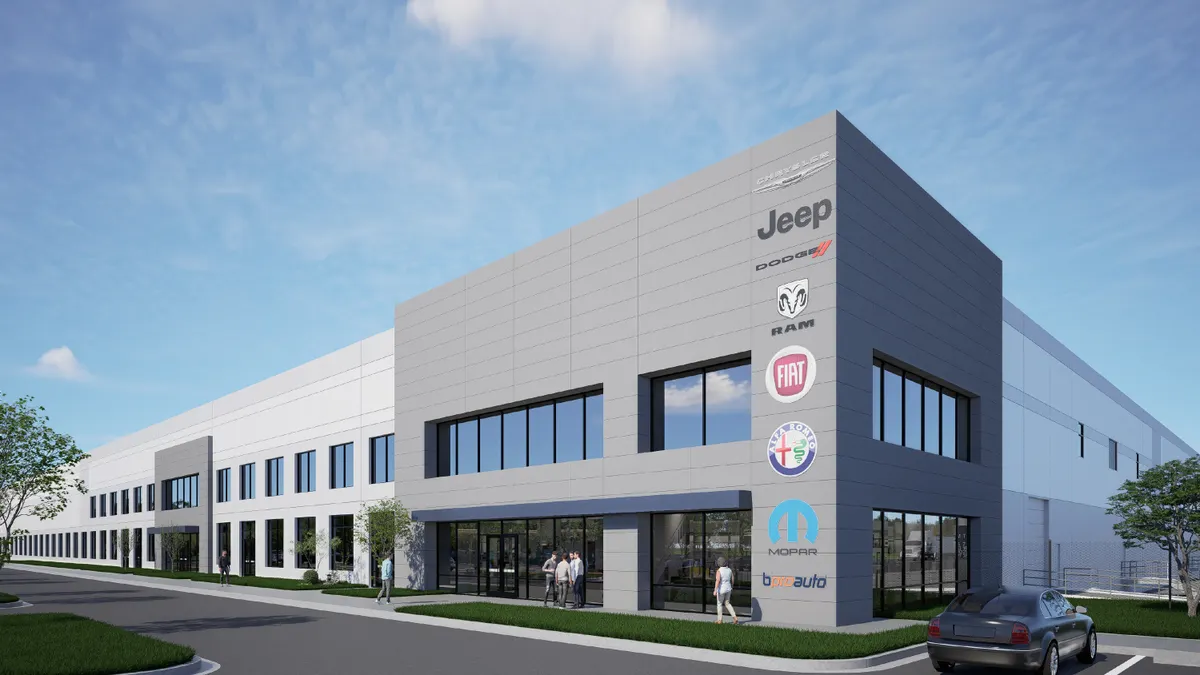Editor's Note: The following is a guest post by Rob DeStefano, a senior product marketing manager at Ivanti Supply Chain. The views expressed here do not necessarily reflect those of Supply Chain Dive.
Let’s say this upfront: humans are not going away in the warehouse. Yes, automation is changing the landscape and for good reason. There simply is no way humans can (without the aid of automated processes) continue effectively supporting the exponential growth of warehousing. Large e-commerce sites and other mega-marketplaces have forevermore disrupted the practices of legacy warehouses in which a person ambles down an aisle, picking sheet in hand, pulls an item from a shelf and moves it to packing and shipping.
Online retailing in the U.S. is projected to surpass $735 billion by 2023 and, keep in mind, it isn’t all large online businesses driving this growth. Small retailers enter the market every day, adding more pressure on warehousing operations to be super-efficient in fulfilling orders. In the hyper-competitive e-commerce market, companies can perish if customers get orders too late.
The era of the cobot
Warehousing of the future will survive by combining the unique, strategic thinking of humans with the efficiencies that automation and AI offer. Automated processes, in which a robot can pick items in super-sized warehouses, will help control costs and enhance the competitiveness of the retailer. At the same time, humans can begin to make more use of voice-enabled and wearable mobile technology to make picking and receiving more efficient. This will create a ‘bionic’ worker using technology to become more productive.
Warehousing will benefit from combining the efficiency and time-savings of robotic picking with human strategic thinking to drive businesses forward.

Humans will also be working in tandem with a collaborative robot, or cobot, that can work safely alongside warehouse employees and take on menial, repetitive tasks so staff can be upskilled and undertake more rewarding, mindful work. In contrast to traditional robots, a cobot’s mission is to intelligently work in tandem with workers.
Advantages of the blended environment
Even while humans aren’t going away in the warehouse, there are not enough of them to fill the number of slots needed to accommodate growing warehouse volume. Supply chain workers are part of the larger U.S. labor story of shortages across all sectors, with unemployment at a low level. It demands that warehousing workers focus on tasks that bring the highest value and productivity to the company, leaving more rote tasks to a robot, or adding the support of a cobot.
The advantages of this blended environment are many. Here are a few:
Spatial considerations. “The logistics sector continues to benefit from structural changes, such as online retailing and evolving consumer behaviors, transforming global supply chains. E-commerce operators require up to three times more space than traditional warehouse users due to a greater diversity in products handled and the need to have them immediately accessible. Global investors have caught on and are keen on adding industrial assets to their portfolios,” Global Head of Industrial & Logistics, Capital Markets at CBRE Jack Fraker said in a blog post.
Mr. Fraker’s comments are spot on. A typical worker cannot physically pick goods in a huge warehouse and do so with a speed and accuracy that keeps pace with growing customer demands. Workers also cannot reach the higher levels in a mega warehouse without using forklifts. All of this ‘long distance’ driving slows down processes and eats up employee time, without any added value. We all appreciate that travel time is among the greatest time sinks in warehouse operations.
Robots, using AI, are the solution here. They can predictably bring shelving to the worker, saving considerable time and costs, further ensuring competitive speed of delivery. In a blended scenario, the worker can assure the accuracy of the picking and complete special requests with the aid of a cobot assistant.
Safety benefits. Industrial physical ailments like back strain tend to escalate when shelving is too high and picking volume has dramatically increased. Robotic picking can eliminate some of this risk.
Strategic capability. Freeing workers from mundane tasks gives them the chance to make more use of their strategic thinking abilities – intellectual processes that are not replicated by current AI applications. Retailers competing for the e-commerce dollar need this strategic aspect for a myriad of events that can occur. If a delivery truck breaks down, a human can make a fast, rational decision on how best to handle this logistical challenge. Having workers available for these types of issues, as well as long-range thinking, is essential to surviving in the e-commerce market.
Looking ahead
New advancements in technology will continue to change the labor-intensive warehouse of today to one of ‘bionic workers’ who will employ wearables and voice applications for hands-free productivity. Items like Google Glass present possibilities for enabling navigation and picking down to the bin level. Voice enablement software has evolved greatly from the early days of recognition and can now be an additional productivity gain, compared to just using tablets.
Voice and vision-picking systems can prevent workers from having to complete the same repetitive movement throughout the day, meaning fewer staff members will suffer from repetitive strain related injuries. It also means workers can navigate the warehouse with their eyes scanning for hazards, rather than looking down at a device screen. This improves warehouse safety and has a positive impact on labor relations, not to mention picking speed.
Within warehouses, drones will complete tasks such as transporting small items and surveying shelves. By integrating them with mobile scanning technology, as used by employees, drones could even sort items and identify stock outages.
This blending of human, AI and automation capabilities is becoming the preferred strategy for the warehouse of tomorrow. With the demands of e-commerce growing, the supply chain and its workers need to make the best use of all productivity technologies available.
This story was first published in our weekly newsletter, Supply Chain Dive: Operations. Sign up here.




















